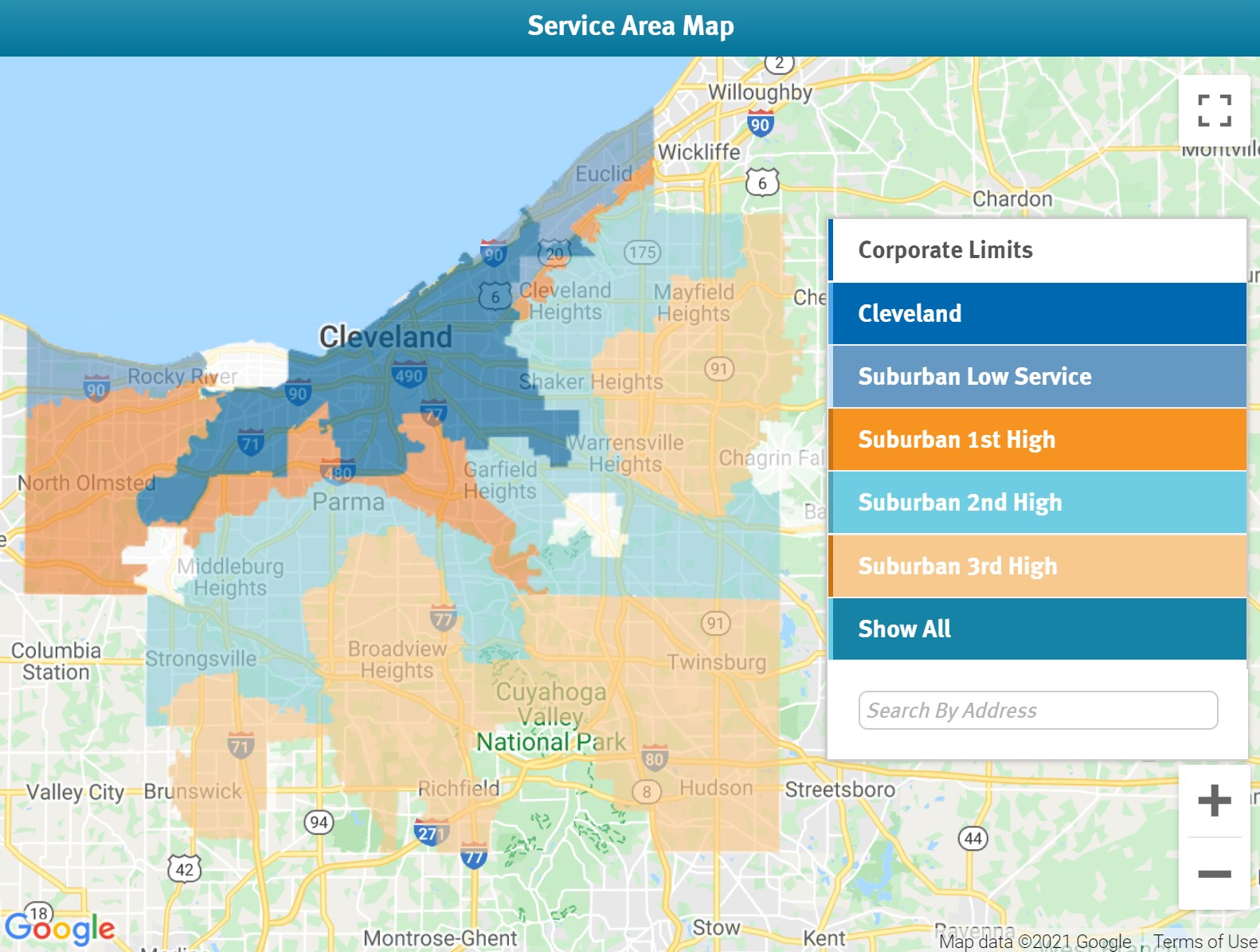Cleveland Public Water System: Well-designed Program with a Major Gap
Cleveland Public Water System serves 1.3 million residents, primarily in Cleveland and surrounding jurisdictions. The utility offers two CAPs: the Homestead Discount Program is administered by the utility itself and offers a lower fixed charge and consumption rate based on income, homeownership, and age or disability status. The Water Affordability Program offers a flat 40 percent discount on all standard water charges and is administered through CHN Housing Partners, a nonprofit community organization that provides housing solutions. Among the utilities surveyed in this report, Cleveland Water was the only public utility to offer both approaches.
The Homestead Discount Program sets the max income threshold at $34,500 (which is above the median household income for the city of Cleveland) and offers a 40 percent discount on water consumption charges. The Water Affordability Program sets the max income threshold at 200 percent of the federal poverty level and offers a 40 percent discount on all standard water charges. Both of these programs set a low income threshold limit and offer a significant discount on water charges.
The CAPs offered by Cleveland Water are reasonably comprehensive and one possible reason could be the availability of adequate funding. Ohio is one of the states that explicitly authorizes the use of rate revenues for establishing and supporting assistance programs. Cleveland uses rates to fund the CAP by incorporating the costs of the programs as part of operational costs. This allows the utility to set low thresholds for household income and expands the amount of the bill discount. However, Cleveland Water ties both of these programs to homeownership and thus excludes renters.
A representative from the Cleveland Public Water System emphasized that it is hard for the utility to gather information on customers who are renters. This may be due to the fact that water bills list the property owner and not the tenant due to the transient nature of their stay. However, this is an easy problem to address as other cities/utilities allow renters to access CAPs as long as the bill is in their name. In cities like Cleveland where approximately 60 percent of the households are renters, excluding them would render the CAPs ineffective.



